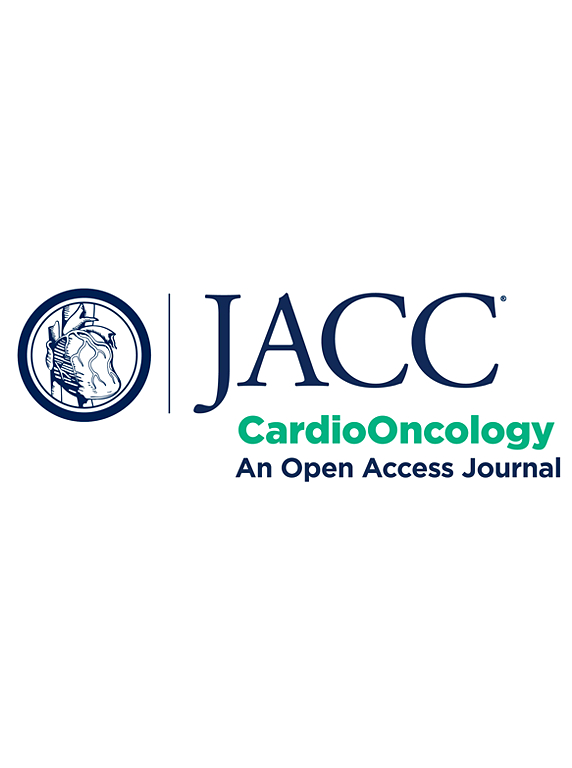Risk of Hematologic Malignancies in Patients With Acute Myocardial Infarction
IF 12.8
1区 医学
Q1 CARDIAC & CARDIOVASCULAR SYSTEMS
引用次数: 0
Abstract
Background
Acute myocardial infarction (AMI) and cancer are leading causes of death worldwide. However, the relationship between AMI and hematologic malignancies remains unclear.
Objectives
The authors aimed to investigate the association between AMI and the subsequent risk of incident hematologic malignancies.
Methods
This retrospective cohort study included 103,686 patients with AMI and no history of hematologic malignancies, and 103,686 age- and sex-matched individuals with no history of AMI or hematologic malignancies, diagnosed between January 1, 2003, and December 31, 2021. Data were obtained from the Korean National Health Insurance claims database. We compared the cumulative incidence of hematologic malignancies between groups using Gray’s method. HRs and 95% CIs were calculated using Gray’s competing risk regression model, with death treated as a competing risk.
Results
During follow-up (AMI, 7.9 years [Q1-Q3: 5.2-11.4 years]; control group, 17.8 years [Q1-Q3: 14.8–17.9 years]), 1,043 and 1,479 individuals in the AMI and control groups, respectively, were newly diagnosed with hematologic malignancies (incidence rate per 1,000 person-years: 1.21 vs 0.93). Competing risk analysis revealed that the AMI group had a higher risk of hematologic malignancy than the control group (HR: 1.49; 95% CI: 1.31-1.69). Findings were consistent in sensitivity and standardized incidence ratio analyses.
Conclusions
Patients with AMI had a higher risk of hematologic malignancies than those without AMI. These findings suggest an association between AMI and hematologic malignancies, and underscore the importance of considering hematologic malignancy development in patients with AMI.
急性心肌梗死患者血液系统恶性肿瘤的风险:一项全国性人群队列研究
背景:急性心肌梗死(AMI)和癌症是世界范围内死亡的主要原因。然而,AMI与血液系统恶性肿瘤之间的关系尚不清楚。目的:作者旨在调查AMI与随后发生血液恶性肿瘤的风险之间的关系。方法:本回顾性队列研究纳入2003年1月1日至2021年12月31日诊断的103,686例AMI且无血液恶性肿瘤病史的患者,以及103,686例年龄和性别匹配且无AMI或血液恶性肿瘤病史的个体。数据来自韩国国民健康保险索赔数据库。我们使用Gray的方法比较两组间血液恶性肿瘤的累积发病率。hr和95% ci采用Gray竞争风险回归模型计算,死亡被视为竞争风险。结果:随访(AMI) 7.9年[Q1-Q3: 5.2-11.4年];AMI组(17.8年[Q1-Q3: 14.8-17.9年])、AMI组(1043例)和对照组(1479例)新诊断为血液系统恶性肿瘤(每1000人年发病率:1.21 vs 0.93)。竞争风险分析显示,AMI组发生血液系统恶性肿瘤的风险高于对照组(HR: 1.49;95% ci: 1.31-1.69)。敏感性和标准化发病率分析的结果是一致的。结论:AMI患者发生血液系统恶性肿瘤的风险高于非AMI患者。这些发现提示AMI与血液恶性肿瘤之间存在关联,并强调了AMI患者考虑血液恶性肿瘤发展的重要性。
本文章由计算机程序翻译,如有差异,请以英文原文为准。
求助全文
约1分钟内获得全文
求助全文
来源期刊

Jacc: Cardiooncology
Multiple-
CiteScore
12.50
自引率
6.30%
发文量
106
期刊介绍:
JACC: CardioOncology is a specialized journal that belongs to the esteemed Journal of the American College of Cardiology (JACC) family. Its purpose is to enhance cardiovascular care for cancer patients by publishing high-quality, innovative scientific research and sharing evidence-based knowledge.
The journal aims to revolutionize the field of cardio-oncology and actively involve and educate professionals in both cardiovascular and oncology fields. It covers a wide range of topics including pre-clinical, translational, and clinical research, as well as best practices in cardio-oncology. Key areas of focus include understanding disease mechanisms, utilizing in vitro and in vivo models, exploring novel and traditional therapeutics (across Phase I-IV trials), studying epidemiology, employing precision medicine, and investigating primary and secondary prevention.
Amyloidosis, cardiovascular risk factors, heart failure, and vascular disease are some examples of the disease states that are of particular interest to the journal. However, it welcomes research on other relevant conditions as well.
 求助内容:
求助内容: 应助结果提醒方式:
应助结果提醒方式:


